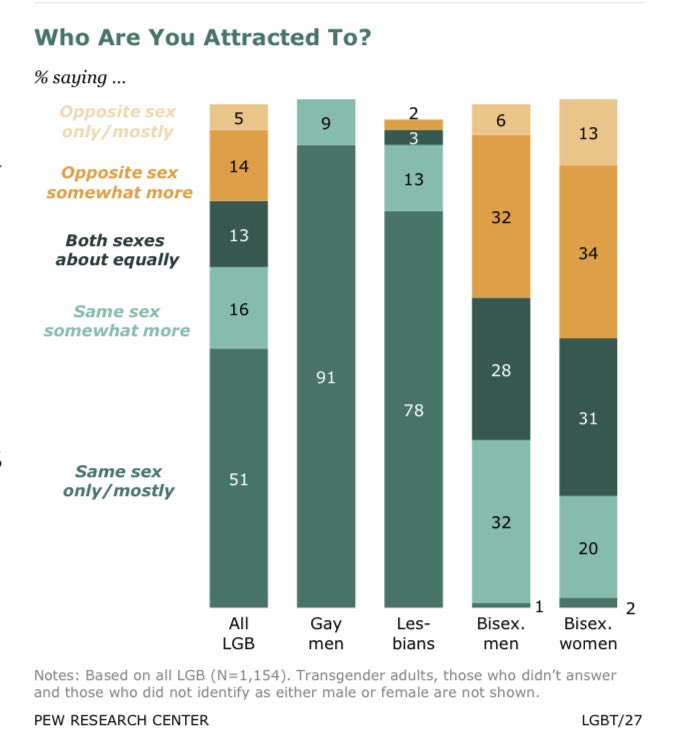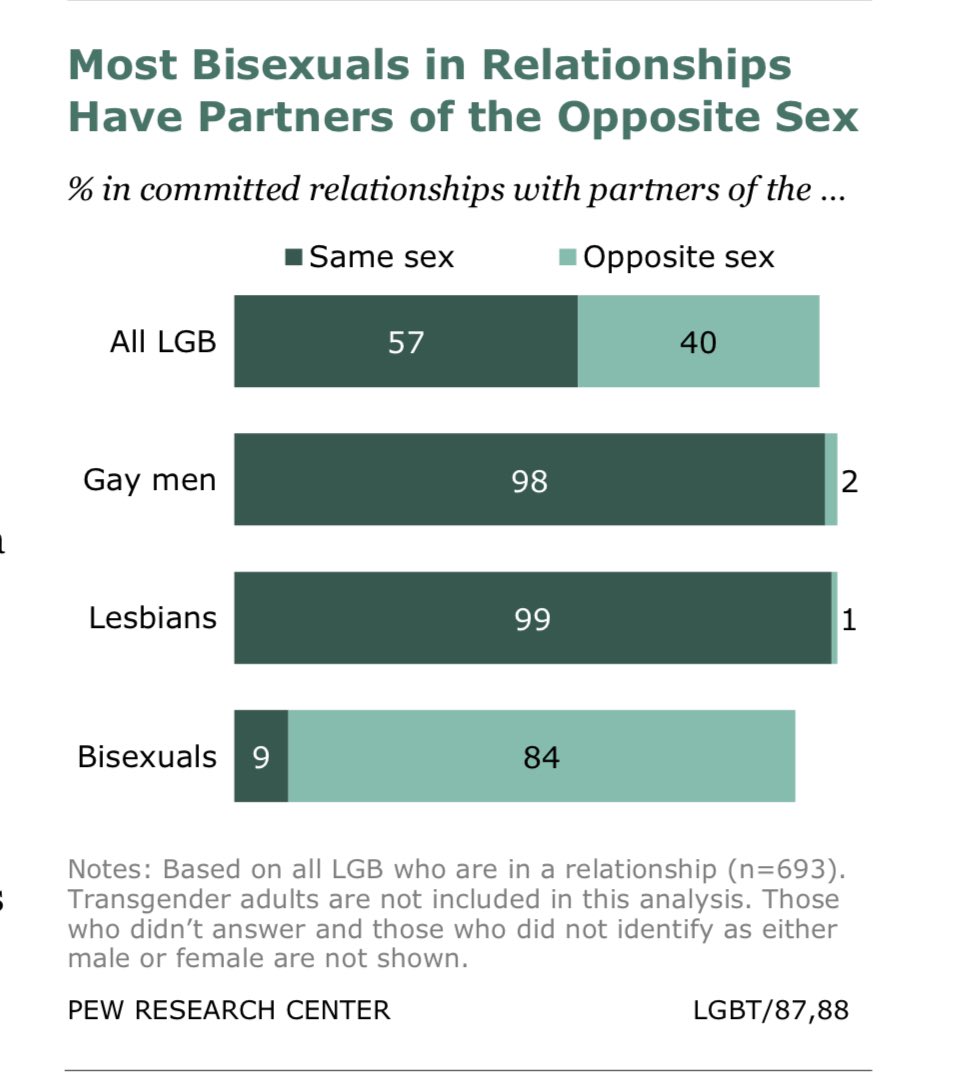There’s loads of chatter about the mind bending ramifications of conditional probability for COVID testing... but where else does the Rev Thomas Bayes’ ghostly hand touch our lives? #BeGayDoMaths  https://abs.twimg.com/emoji/v2/... draggable="false" alt="🏳️🌈" title="Regenbogen-Flagge" aria-label="Emoji: Regenbogen-Flagge"> - a
https://abs.twimg.com/emoji/v2/... draggable="false" alt="🏳️🌈" title="Regenbogen-Flagge" aria-label="Emoji: Regenbogen-Flagge"> - a  https://abs.twimg.com/emoji/v2/... draggable="false" alt="🧵" title="Thread" aria-label="Emoji: Thread">(1/14)
https://abs.twimg.com/emoji/v2/... draggable="false" alt="🧵" title="Thread" aria-label="Emoji: Thread">(1/14)
According to @pewresearch, the avg bisexual person is attracted to opposite sex partners a little more than same sex partners but it’s not far off 50/50 https://www.pewsocialtrends.org/wp-content/uploads/sites/3/2013/06/SDT_LGBT-Americans_06-2013.pdf">https://www.pewsocialtrends.org/wp-conten... (2/14)
The same research shows that 90% of bisexuals in relationships are paired up with someone of the opposite sex (the graphic is confusing: 90% = (84/(84+9))*100). (3/14)
So, can Bayes’ theorem explain this seeming gap between stated and revealed preference? (Answer: pretty much, yes!). (4/14)
(Sidebar: I’ve modelled sex/ gender as a single thing that is binary. I know this isn’t how the world looks and I’m sorry my maths isn’t up to being more inclusive!  https://abs.twimg.com/emoji/v2/... draggable="false" alt="🏳️⚧️" title="Transgender-Flagge" aria-label="Emoji: Transgender-Flagge">) (5/14)
https://abs.twimg.com/emoji/v2/... draggable="false" alt="🏳️⚧️" title="Transgender-Flagge" aria-label="Emoji: Transgender-Flagge">) (5/14)
As we know from the COVID test examples, it’s all about that base rate: 5.4% of Americans identify as LGBT+ according to Gallup research: ~3.1% as bisexual and ~2.5% as gay. (6/14) https://news.gallup.com/poll/329708/lgbt-identification-rises-latest-estimate.aspx">https://news.gallup.com/poll/3297...
Now, let’s imagine we have a bisexual man looking for love. He finds men and women equally attractive. He is also smoking hot, which means 100% of people attracted to men fancy him. (7/14)
We send Mr Love Seeker into a room of 100 people representative of our population: 50 men, 50 women. In each group of 50, 1.25 are gay, 1.55 are bisexual, the other 47.2 are straight. (8/14)
Of the 100, 51.55 people are attracted to our guy: 48.75 women and 2.8 men. ((47.2+1.55 women) + (1.25+1.55 men)). In other words, *despite liking men and women equally*, if he chooses from his prospects at random there’s ~95% chance it’s going to be a woman. (9/14)
This actually suggests bisexuals should end up with opposite sex partners *even more* frequently than they do in the Pew Research (95% of the time vs 90%). (10/14)
This difference could be explained by lots of things: an underestimated base rate of same sex attraction, non-representative dating pools (eg gay bars), misreported preferences among bisexuals, different relationship-entry thresholds by sex etc... (11/14)
And of course this model doesn’t stand up to any kind of real world pressures, like stigma against bisexuals or costlier signalling for same-sex attractions (12/14)
Nevertheless, to stand an even chance of ending up with a partner of the same sex, a bisexual person would typically be ~17x more attracted to the same sex than the opposite sex (e.g. they are attracted to 94.5% of same sex prospects and 5.5% of opposite sex prospects). (13/14)
This doesn’t mean all bisexuals with a same sex partner are 94.5% gay... obviously. But it does mathematically confirm that when someone tells you they’re bisexual even though you’ve only seen them in opposite sex partnerships you should take their word for it! (14/14)
PS I’m not especially great at maths so fully expect errors to have crept in! (15/14)

 Read on Twitter
Read on Twitter



